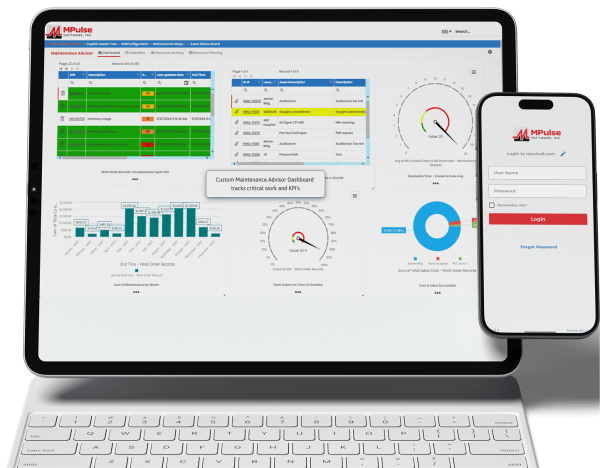While I’ve long advocated for the benefits of inventory control, it’s not a simple topic for maintenance managers. I’ve seen systems where techs just order parts on an as-needed basis, and I’ve helped companies develop sophisticated inventory control systems using CMMS inventory control software.
Wherever your organization falls on this spectrum, it’s likely you can benefit from the inventory control features within your CMMS software. And the benefits might surprise you.
Remember Cathy, whose company began asking different questions about their maintenance strategy after implementing MPulse Software, Inc? Those questions led her company to implement advanced inventory control features, and the results were very interesting.
“When we decided to improve our parts tracking, we needed five things from our MPulse CMMS software,” Cathy said. These were…
- Purchase price and date
- Vendor information
- Physical location
- Past usage rates (to calculate appropriate stock levels and reorder points)
- Notifications when parts or inventory levels fall below minimum stock levels
Table of Contents
Inventory Turnover
Once the new stockroom inventory software system was set up, Cathy’s managers first looked at inventory turnover—a measure of the number of times inventory is sold or used in a time period, such as a year.
“In our industry, our goal is an annual inventory turnover of 3 or 4,” Cathy explained. “But when we looked at our CMMS data, we saw our inventory turnover rate was just under 1. That’s not good.”
Cathy’s organization was spending a lot of money storing and managing parts they didn’t need. That means they were wasting money spent on…
- Increased square footage to store parts
- Unused or underused parts
- Inventory carrying costs
- Staff time to manage parts
- Staff time to perform annual or cyclical inventory audits
- Lack of correct parts on hand for staff when they are needed
Inventory Lead Times
To tackle this problem, Cathy was tasked with improving the inventory turnover rate. She used MPulse stockroom inventory software to help employees manage the inventory based on need, availability, and order time.
“We have some critical assets that need parts with a long lead time. They come from Europe, and sometimes it takes several weeks to get them,” Cathy explained. “With MPulse, we adjusted our stocking levels by calculating average usage rates by the part’s lead time in days. It helped prevent both having too many and not enough of key items.”
Inventory turnover and lead times just two of the important parts of inventory control. Next time, we’ll discuss other inventory control issues that Cathy’s company found.
How does your organization manage stockroom inventory? What would you like to do better? Leave a comment or contact me.






